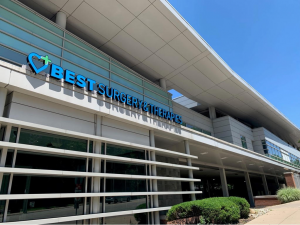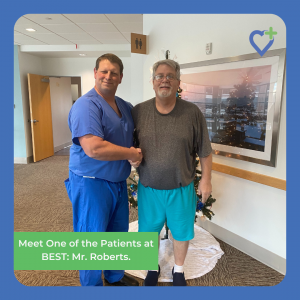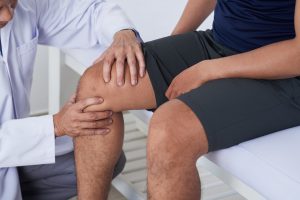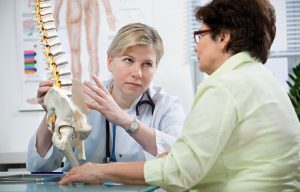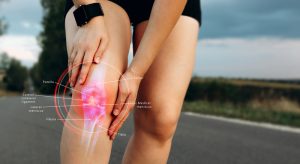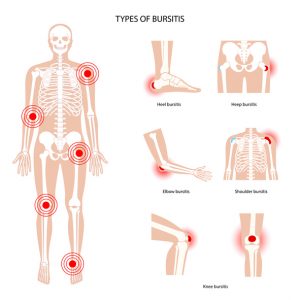Articular Cartilage Damage
Articular cartilage is the layer of smooth, tough cartilage that covers the ends of bones and protects the joints in the body. Its purpose is to prevent bone-on-bone friction during joint motion — with a protective layer of cartilage, the bones of your joints glide smoothly over each other when during movement.
What happens if protective joint cartilage becomes damaged or worn away? That’s a common injury, especially in weight-bearing joints like the knee. Keep reading to learn more about how cartilage damage happens in the knee and what you can do about it.
Primary Causes of Articular Cartilage Damage
Articular cartilage (also known as hyaline cartilage) is the most common type of cartilage in the body. It covers the ends of bones in the body’s joints and works with a lubricating joint fluid to allow joint surfaces to move across each other without friction. Although cartilage is designed to be tough and flexible, it can become damaged due to a number of factors.
Autoimmune diseases like rheumatoid arthritis can also lead to articular cartilage damage. Rheumatoid arthritis causes the body’s immune system to attack, inflame, and deteriorate healthy cells, including cartilage.
The primary causes of articular cartilage damage in the knee include:
Natural degeneration: As part of the natural aging process, cartilage dries out, becomes brittle, and starts deteriorating over time. A lot of stress and pressure on the knees from everyday movements, and causes the protective cartilage to wear away gradually. As the cartilage degenerates, arthritis pain and stiffness in the knees become more likely.
Injuries: Traumatic or repetitive motion injuries can also cause articular cartilage damage. Articular cartilage doesn’t have its own blood supply, which makes healing difficult when damage occurs.
Conservative Treatments
Articular cartilage has little to no power to heal on its own. However, a conservative treatment plan combined with healthy lifestyle choices can be highly effective in managing symptoms and improving knee function while you and your doctor monitor the overall progress of the cartilage damage.
A treatment plan may include:
- Periods of rest
- Activity modifications to reduce stress on the knees
- Physical therapy to strengthen supporting muscles and increase range of motion
- Over-the-counter anti-inflammatory medications
- Regular stretching and exercise
Symptoms
Bone-on-bone friction from cartilage loss leads to pain and inflammation in the knee joint. Cartilage degeneration or a cartilage injury can cause the following symptoms:
- Knee pain
- Swelling, tenderness, and achiness
- Stiffness
- Locking of the knee joint
- Cracking, popping, and grinding sensations during movement
Articular cartilage damage can worsen over time. If the damage progresses, it is possible to start having difficulty walking, climbing stairs, or bending and straightening the knee all the way.
Contact an orthopaedic while exhibiting any of the above symptoms. Receiving a prompt diagnosis and starting a treatment plan early can help slow or prevent further damage.
Diagnosis
When you meet with your doctor, you’ll likely start with a discussion about symptoms and how it’s affecting daily activities. Writing down your specific symptoms, the frequency of symptoms, and triggers before your appointment can help the doctor get a more complete picture during the evaluation.
Other diagnostic steps include:
- A review of your personal and family medical history
- A physical examination
- Imaging exams like an X-ray or MRI
Once a doctor has an accurate diagnosis, a treatment plan must be developed.
Knee Surgery for Articular Cartilage Damage
Surgery is a treatment option for severe cases of cartilage damage and persistent pain and loss of function that isn’t relieved with conservative treatment. Several minimally invasive surgery techniques are available to treat injuries and stimulate the growth of new cartilage. If surgery is on the table, an orthopaedic surgeon will walk through options and the risks of each one.
Knee injuries can seriously disrupt your life, but effective treatments are available to get you back to the people and activities you love! Don’t live in pain any longer — contact the patient care team at BEST Health System to schedule a knee evaluation in our clinic.
Reach Out to BEST Health System Today
If you’re living with knee pain, call BEST Health System today. We can connect you to a location near you and from there, our highly skilled medical team will help you develop a personalized treatment plan to get you back to the people and activities you love as soon as possible.
If you have experienced any of these symptoms or recieved a diagnosis and need treatment, BEST can help. Take the first step towards relief today.
Related Articles
A Map of BEST Health System's Ohio Locations
BEST – The Health System Redefining Care Throughout Ohio BEST Health System is a modern healthcare system with accessible locations throughout the state of Ohio. […]
Getting Rid of Knee Pain
Knee pain affects many people and there are several different causes and conditions that induce these symptoms. Living with knee pain can be debilitating and […]
What is Knee Replacement Surgery
The Causes of Knee Pain With age, knee pain becomes a common health condition that many adults suffer from. What begins as minimal, infrequent pain […]
5 Things You Didn't Know about Joint Care
Joint pain can be caused by a number of different conditions, the most prevalent being arthritis. If it is severe it can keep your day-to-day […]
Patient Testimonial - Mr. Roberts Total Knee Replacement
Living with Arthritis in the Knee What is it really like living with arthritis of the knee? As a patient, understanding what arthritis of the […]
Total Knee Arthroplasty with Dr. James Abbott
Living with Arthritis of the Knee What is it really like living with arthritis of the knee? To begin, it’s important to fully understand what […]
How Iovera Can Help Patients
What is Iovera Treatment? At BEST, our primary goal is to ensure our patients are at ease during each step of their treatment. Whether this […]
Why You Should Not Ignore Knee Pain
Are You Experiencing Persistent Knee Pain? If you have been dealing with chronic knee pain for a prolonged period, it is vital to take the […]
Osteoarthritis and Spinal Stenosis
What is Osteoarthritis Osteoarthritis is one of the most common causes of spinal stenosis, according to the American College of Rheumatology. Further research shows that […]
What Are the Most Common Causes of Meniscus Tears?
Meniscus tears are a common injury that results in pain and mobility problems for all kinds of people. Although it is often a sports injury, […]
Is it Time to Consider ACL Surgery? Watch Out for These Signs
movement changes or direct trauma to the knee through collision. This is why ACL tears are so common among football players, basketball players, and soccer players.
Five Major Types of Bursitis and How to Find Relief
Bursitis may not be as commonly known as arthritis, but it is just as difficult and debilitating to live with. This condition is similar to […]
